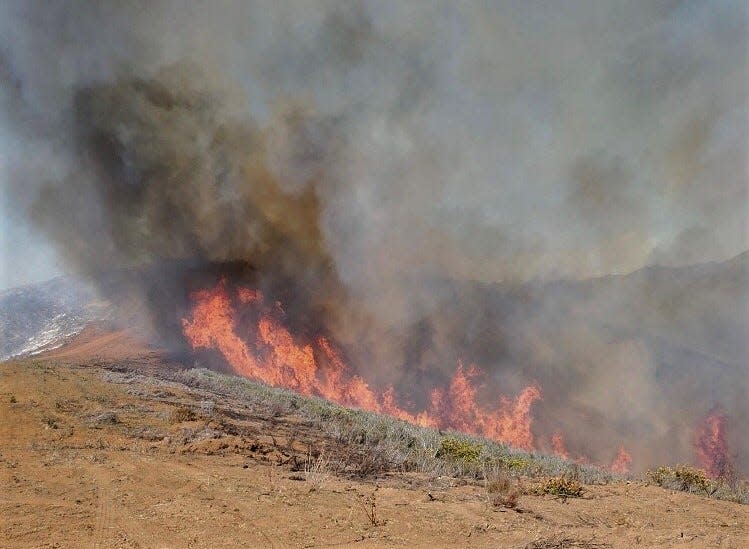Fighting wildfire with ‘good fire’: California must return to prescribed burns

It has become second nature to scan the horizon for smoke as soon as you leave the house. All ranchers do that almost subconsciously. They fear fire. Uncontrolled fire with high winds. The acrid smell of smoke that begins to grip your nose as you search for the source.
There used to be such a thing as “good fire” on the land. Fire has always been part of nature’s regimen of regeneration and rejuvenation of the landscape. We have moved so far away from that model that fuel loads now make fire almost impossible to control. Now panic seems to be the theme of the general public for any and all fires.
Last month a neighbor to our north caused a fire that destroyed several structures during a high wind event. The fire rapidly spread to our ranch, burning 1,000 acres in a couple of hours. Luckily there were few large fires that day, and air and ground resources were onsite quickly, saving most of our rangeland.
Had the June fire not been suppressed by nightfall, it likely could have reached the foothill town of Loma Rica, and all the homes and small properties in between our ranch and that rural community.
Cal Fire had to hit it hard and fast. A quick amassing of resources — planes, choppers, bulldozers and hand crews, all at tremendous cost. That means crews cut lots of fences and dug deep fire lines with bulldozers; vegetation that protects the soil was destroyed which leads to erosion and a loss of forage for cattle and wildlife.
All of this comes at an enormous cost to taxpayers and landowners. Ranchers have seen this scenario play out over and over.
As a citizenry, we are so scared of fire that many people panic at the first whiff of smoke. It is hard to blame the public for their panic. There has been unbelievable destruction in recent years — Dixie, Camp, Bear, August Complex — and the list goes on, destroying millions of acres annually. Even now, there are active fires in California that have closed recreation areas and forced people to evacuate their homes.
But in our fear of fire, we miss the opportunity to do important work for the ecosystem and the community.
Prescribed fire, under conditions that we determine, can have so many positive effects. If we build fire lines in advance and select a day with limited wind, we can actually control the fire and benefit the ecosystem.
Planned fire can reduce fuel loads and remove noxious weeds and dead or decadent material like brush and dead oak trees. It can fertilize the soil with ash, eliminate undesirable species and create a healthier ecosystem for wildlife and grazing. It also would be more cost effective because, rather than responding to an emergency, you would have a planned event.
Of course there is always a risk, but California has made strides conducting more prescribed burns. However, state leaders haven’t always been honest about prevention efforts, and we can certainly do much more.
We need to reintroduce “good fire” to the landscape on a regular basis. It won’t be easy, but if we establish protocols and work with the affected communities and landowners in planning, we can have a healthier ecosystem and hopefully mitigate risk to a point that people can once again get insurance for their rural homes.
It’s a tall task. But if we don’t try, the conditions will only worsen, and catastrophic fire will continue to become the norm.
Dave Daley is a commercial cattle producer in Oroville and animal science professor.
This article originally appeared on Palm Springs Desert Sun: California must return to prescribed burns

